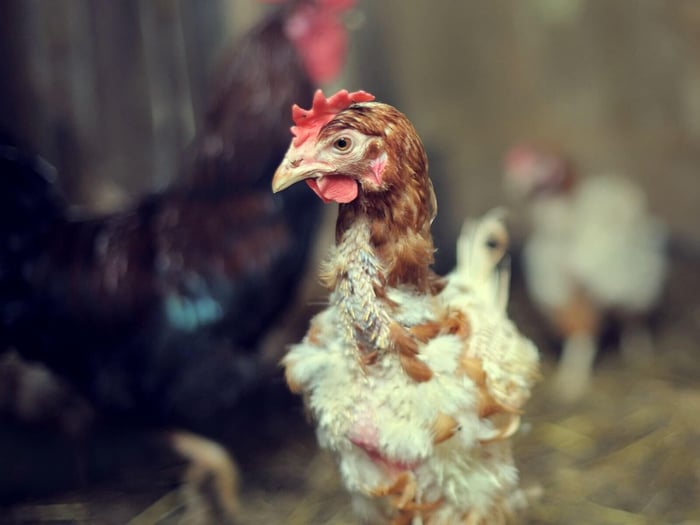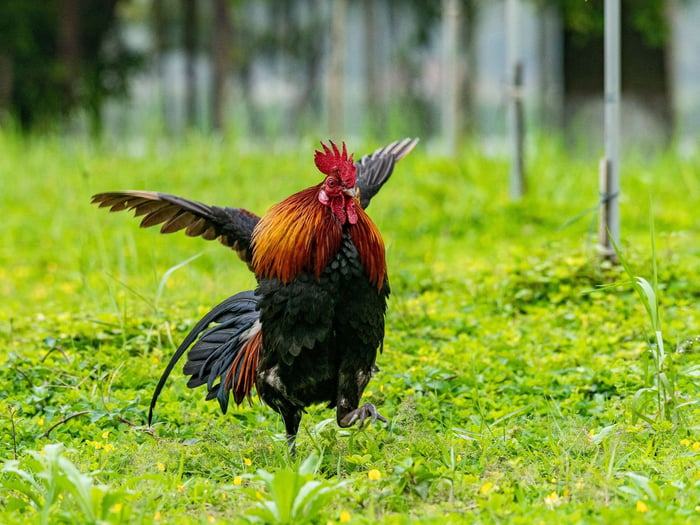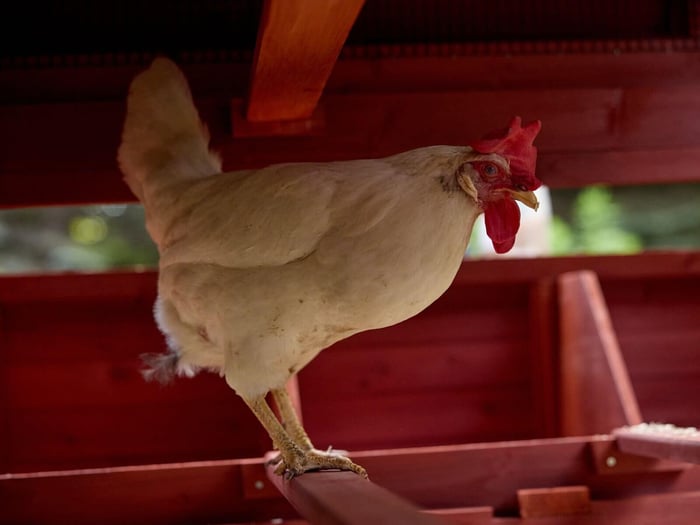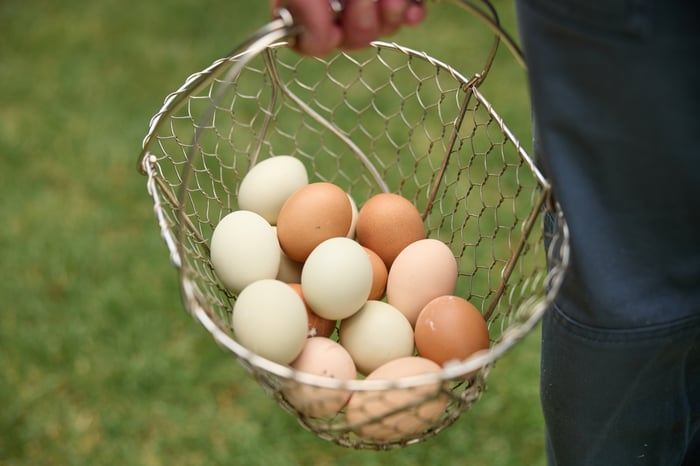Table of Contents
Prepare Your Chickens for Molting Season
As summer’s long days fade into crisp mornings and colorful leaves, backyard chicken keepers know it’s time for a seasonal shift. Fall means cooler weather, earlier nights… and yes, the start of molting season for many flocks.
Molting is a natural process where chickens shed old feathers and grow new ones. It usually happens once a year—often in late summer or fall—triggered by shorter daylight hours. Your hens’ bodies sense the change in light and temperature, prompting them to replace worn feathers before winter. While this is a healthy and necessary process, it can be hard on your birds and slow down egg production.
Even if your hens aren’t losing feathers just yet, fall is the perfect time to get ahead on coop maintenance, diet adjustments, and predator-proofing. Whether you’re a suburban chicken keeper with three beloved hens or a homesteader managing a larger flock, preparation now means a healthier, happier winter ahead.
Here’s our guide, backed by personal experience from our staff, to making sure your chickens are ready for everything fall throws their way—molting and all.
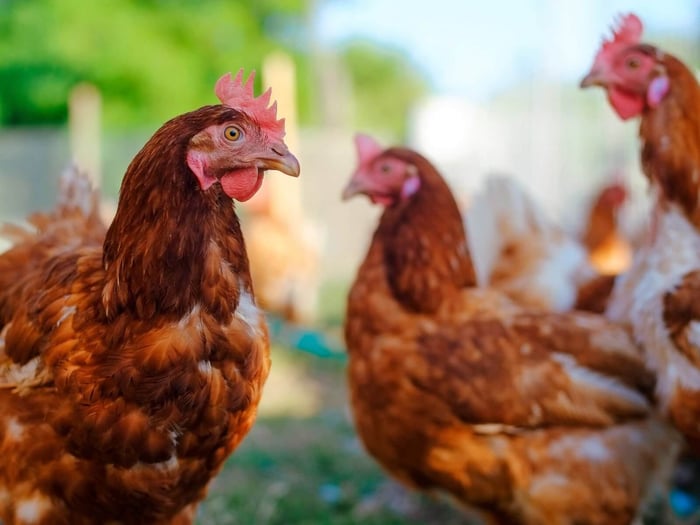
Things to [Mentally] Prepare For:
To be blunt—your chickens are going to look a little rough. You might walk out to the coop and find feathers scattered everywhere, wondering if something terrible happened. Sometimes hens drop feathers slowly, but other times it looks like they lost them all in a single day. Don’t be alarmed if you see a few bald spots—this is completely normal and part of the molting process.
The other big change you’ll notice is with egg production. Shorter days mean less sunlight, and less sunlight means fewer eggs. Your hens’ bodies respond directly to light levels, so it’s natural to collect fewer eggs in the fall. Their energy is shifting away from laying and into feather regrowth. While some chicken keepers use artificial lighting to boost egg production, we recommend letting egg laying slow down for at least a few weeks so your flock can put their energy where it’s needed most. Think of molting as your chickens’ seasonal wardrobe change—it may look a little messy, but it’s an essential part of their natural cycle.
Give Their Space a Deep Clean
Before the weather turns fully chilly, set your flock up for success with a thorough coop refresh. A clean, comfortable environment not only reduces stress but also helps prevent pests, mold, and respiratory issues—problems that can be especially tough during molting season.
Start with the basics:
Remove old bedding and replace it with fresh pine shavings or straw
Disinfect surfaces to eliminate lingering bacteria or mites
Check for drafts—you want ventilation, but not cold gusts on roosting birds
Don’t forget the nesting boxes! Even though shorter days and molting can slow down egg production, your hens will still appreciate a fresh, cozy place to lay. Replacing worn nesting pads and adding herbs or blends can also discourage pests and keep things inviting.
Helpful products: Coop Recuperate is a natural refresher that cuts down ammonia, absorbs moisture, and keeps bedding fresher, longer. For stubborn messes, the Coop Poop Buster makes cleaning a breeze. And for nesting boxes, our Natural Excelsior Aspen Fiber Nesting Pads provide soft, pest-resistant comfort that’s easy to maintain.
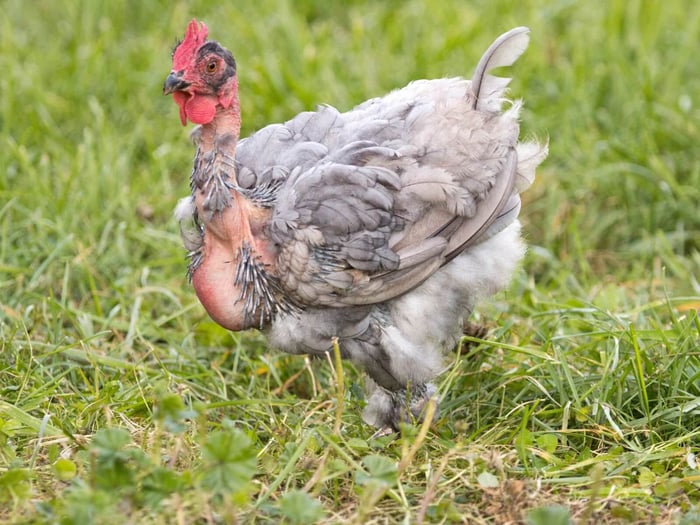
Provide a Stress-Free Environment
Fall is a busy, stressful season for everyone — from back-to-school routines and endless sports practices to the mountain of extra laundry. For your flock, molting season brings its own kind of stress (after all, you’d feel frazzled too if your hair started falling out!). The best way to support them is to keep their environment steady and avoid making any big changes during this time.
Avoid adding new birds unless necessary.
Minimize handling during heavy feather loss (they aren't in pain, but new feathers are tender until fully grown!)
Provide enough room in the run so hens can avoid pecking from flock-mate (everyone is a little on edge)
Boost Their Protein: Switch to a higher-protein feed or supplement with extras like scrambled eggs, mealworms, or other protein-packed treats to support healthy feather regrowth.
We highly recommend Pampered Chicken Mama's BEE Beautiful Hen Herbal Treatment for your flock! This isn’t just a treat — it’s a superfood! Packed with essential vitamins, minerals, and protein, it gives your hens the boost they need for overall health and strong feather growth — especially during the demanding fall season. Cooler weather means they’ll start burning more calories to keep warm, so bring on the treats!
Don't Forget about Hungry Predators
As the weather cools down, wild animals are also preparing for winter. With food sources getting scarce, predators like raccoons, foxes, and hawks may be more determined to find a meal — and your chickens can look like an easy target. If your flock free ranges, you may want to limit their roaming time or keep a closer watch during the shorter daylight hours.
The good news is, a few simple steps go a long way in keeping your flock safe:
Repair any gaps in fencing or wire before the cold sets in
Double-check doors, latches, and locks for wear and tear
Add hardware cloth over weak spots, especially around windows or vents
Consider adding a motion light or camera for extra peace of mind on darker nights
A little preparation now means your flock stays secure and you head into winter worry-free.
Final Thoughts
Preparing your chickens for fall isn’t just about molting—it’s about setting them up for comfort, health, and safety before winter hits. From a cozy, clean coop to a protein-rich diet, a little preparation now will make the colder months easier for both you and your flock. 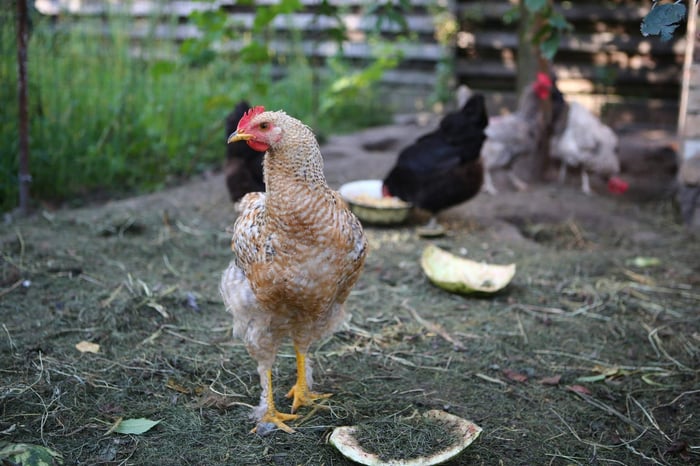
FAQs
What is molting in chickens?
Molting is when chickens shed old feathers and grow new ones, often in late summer or fall due to shorter days.
Do all chickens molt in the fall?
Most do, but the timing varies by breed and age.
Should I change feed during molting?
It is recommended to slightly increase protein to help with feather regrowth.
Will egg production drop during molting?
Yes, many hens lay fewer eggs or stop entirely for a few weeks.
How long does molting last?
Usually 6–12 weeks, depending on the bird.


.png)
